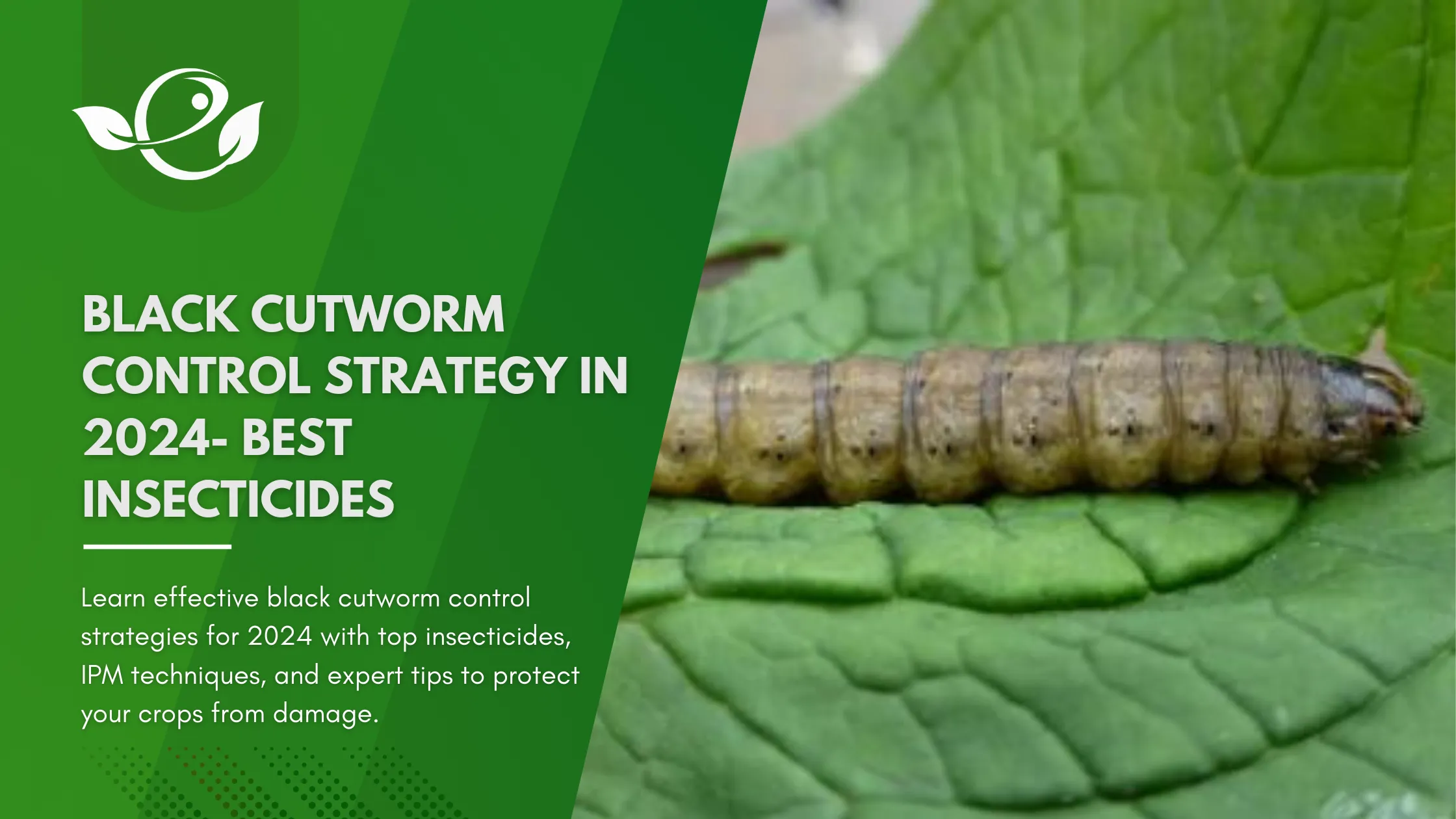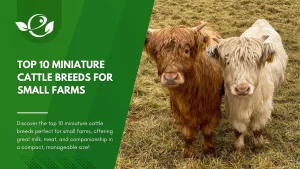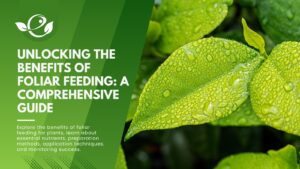Table of Contents
The black cutworm, Agrotis ipsilon, is notorious for the destruction it causes in agricultural fields and home gardens across the world. Its relentless appetite for young seedlings has caused farmers and gardeners to seek ever-evolving strategies to combat its destruction. While tiny in size, the impact of these pests is far-reaching, resulting in significant crop loss, reduced yields, and financial strain on both commercial and small-scale farmers. The challenge grows even more complicated with the pest’s ability to develop resistance to traditional insecticides.
In 2024, controlling black cutworms requires a modern approach that combines cutting-edge insecticide technology, biological control methods, and sound agricultural practices. The life cycle of this destructive pest makes it particularly challenging, but with the right strategies, black cutworm populations can be kept in check. This article delves into the most effective methods of controlling black cutworms in 2024, including the best insecticides and the principles of integrated pest management (IPM) that ensure long-term control while mitigating environmental impact.
Understanding the Black Cutworm: Life Cycle and Behavior
Effective black cutworm control begins with a thorough understanding of their life cycle and behavior. These nocturnal pests thrive in various environments, and their ability to migrate makes them a widespread threat to different crops.
Life Cycle of the Black Cutworm
- Egg Stage: The life cycle begins with the female moth laying eggs in grassy areas, weedy fields, or crop stubble. Eggs are often deposited in clusters on leaves or near the base of plants. Depending on the climate and location, black cutworms can produce multiple generations per year, compounding the problem.
- Larval Stage (The Destructive Phase): Once the eggs hatch, larvae emerge, and this is where the real damage begins. Black cutworm larvae feed on plants by cutting through stems at the soil level, effectively killing the plant. This stage is particularly damaging to young seedlings, which are less able to recover from the physical damage. The larvae typically hide during the day and come out to feed at night.
- Pupation and Adult Stage: After feeding and moulting several times, the larvae pupate in the soil. The adults that emerge are moths, which migrate to new areas to lay eggs and continue the cycle. Moths are nocturnal and tend to be attracted to lights, making nighttime activity an important consideration for control.
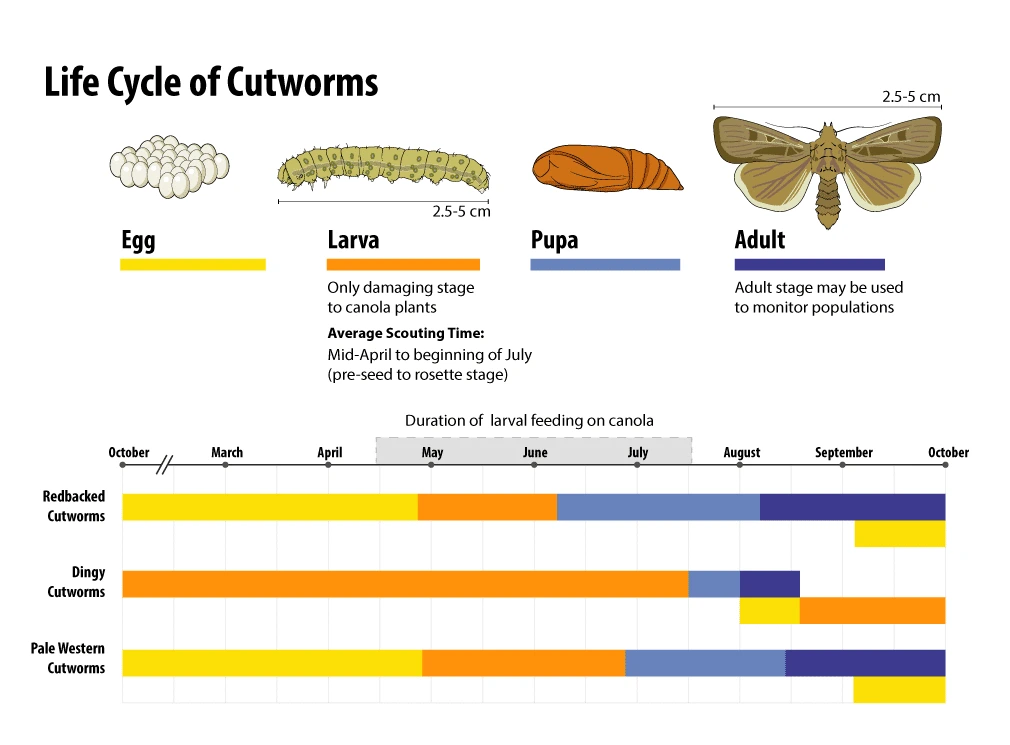
Best Time to Control Black Cutworms
Understanding the life cycle helps determine the optimal time for control efforts. The larval stage is the most vulnerable period for intervention, as this is when they are actively feeding and causing the most damage. Targeting larvae before they reach maturity and pupate is critical for effective control.
Symptoms and Damage Caused by Black Cutworms
The hallmark sign of a black cutworm infestation is the cutting of seedlings at the base. However, the damage can vary depending on the crop and the infestation level. Recognizing the early symptoms is crucial for timely intervention.
Signs of Black Cutworm Infestation
- Cut Seedlings: One of the most telling signs is the severing of plant stems near the soil surface. This can result in the complete destruction of the plant, especially in seedlings that cannot regenerate.
- Uneven Crop Stands: Infestations often lead to irregular or uneven crop stands due to the selective feeding behaviour of the larvae. This is particularly noticeable in large fields, where black cutworms can devastate significant sections.
- Wilting and Dying Plants: Larger larvae may climb and chew on leaves, leading to defoliation, wilting, and eventual death of the plant if left unchecked.
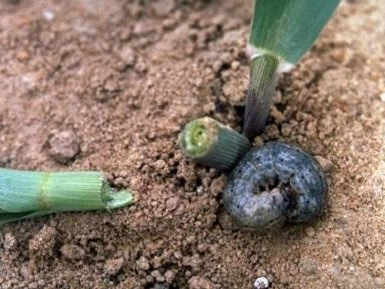

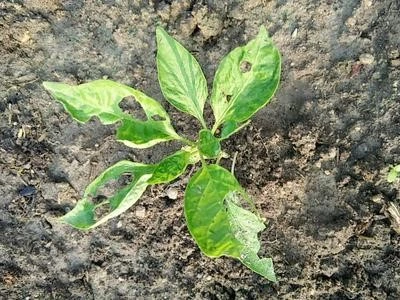
Economic Impact of Black Cutworms
For commercial farmers, the financial consequences of a black cutworm infestation can be severe. Black cutworms are known to damage a variety of crops, including:
- Corn: One of the most susceptible crops, especially during the seedling stage.
- Soybeans: Larvae can cut young plants, leading to reduced yields.
- Wheat and Other Small Grains: Infestations can cause major stand loss, which directly impacts production.
- Vegetables: Home gardens are also vulnerable, with crops like tomatoes, peppers, and root vegetables being frequent targets.
Understanding these symptoms and their potential damage is essential for formulating a rapid and effective control strategy.
Integrated Pest Management (IPM) Approach to Cutworm Control
Integrated Pest Management (IPM) provides a holistic approach to black cutworm control, combining biological, cultural, and chemical strategies to maintain pest populations below economic thresholds. In 2024, IPM remains one of the most effective frameworks for managing black cutworms sustainably.
1. Prevention Methods
Preventing black cutworm infestations before they begin is the first line of defence.
- Soil Preparation and Tillage: Tilling the soil can disrupt the life cycle by exposing larvae and pupae to predators and environmental conditions that decrease their survival rates.
- Crop Rotation: Rotating crops can help reduce the likelihood of continuous infestations, especially if rotating to crops less susceptible to black cutworm damage.
- Weed Control: Reducing grassy weeds and plant debris that act as host sites for egg-laying can significantly reduce populations.
- Early Planting: Planting early can help crops grow past the vulnerable seedling stage before black cutworm larvae emerge in large numbers.
2. Biological Control
Natural enemies can provide significant assistance in reducing black cutworm populations without the need for chemical intervention.
- Ground Beetles: These beneficial insects are natural predators of black cutworms and can help keep their populations in check.
- Parasitic Wasps and Nematodes: These biological controls attack larvae, reducing their numbers effectively. Using biological control agents like parasitic nematodes (Steinernema carpocapsae) can suppress larvae before they cause extensive damage.
3. Cultural Control
Cultural methods focus on altering farming practices to make the environment less conducive to black cutworm activity.
- Light Management: Since black cutworm moths are nocturnal and attracted to light, reducing light sources during the night can minimize egg-laying in nearby fields or gardens.
- Pheromone Traps: Setting pheromone traps can help monitor moth populations and provide early warning of potential infestations. In some cases, pheromone traps can also reduce moth numbers, though they are mainly used for tracking population dynamics.
Best Insecticides for Black Cutworm Control in 2024
While biological and cultural controls are essential parts of an integrated approach, insecticides remain one of the most effective tools for controlling black cutworm infestations. In 2024, several insecticides have emerged as top choices for their efficacy and safety.
1. Pyrethroids
Pyrethroids are synthetic chemical compounds that are highly effective in targeting the nervous system of insects.
- Lambda-cyhalothrin: One of the most commonly used pyrethroids for black cutworm control, lambda-cyhalothrin provides fast knockdown of larvae and excellent residual activity. Its quick action makes it a go-to choice for commercial and home gardeners alike.
- Permethrin: Another potent pyrethroid, permethrin is effective against a wide range of pests, including black cutworms. It works by paralyzing and killing the larvae on contact.
2. Neonicotinoids
Neonicotinoids are another class of insecticides that work by affecting the nervous system of insects but are highly selective for pests, making them relatively safe for beneficial organisms.
- Imidacloprid: Known for its long-lasting residual effect, imidacloprid is commonly used as a soil treatment to protect crops from below-ground pests like black cutworms. Its ability to remain active in the soil makes it a top choice for long-term control.
3. Biological Insecticides
Biological insecticides offer an environmentally friendly solution to black cutworm control, targeting larvae while minimizing harm to non-target species.
- Bacillus thuringiensis (Bt-kurstaki): This naturally occurring bacterium produces toxins that specifically target the gut of larvae. Once ingested, it disrupts digestion, leading to starvation and death. Bt is a preferred choice for organic farmers and gardeners.
4. Spinosad
Derived from the naturally occurring bacterium Saccharopolyspora spinosa, spinosad is an insecticide that is both effective and environmentally friendly. It targets the larval stage of black cutworms and provides quick knockdown with low toxicity to beneficial insects.
- Spinosad: Spinosad is particularly useful in organic gardening settings, as it is effective against a broad range of pests, including black cutworms, while having minimal impact on beneficial insects like bees and ladybugs.
5. Chlorantraniliprole
A newer insecticide, chlorantraniliprole, offers a highly targeted approach to black cutworm control. It disrupts the muscle function of larvae, leading to paralysis and death. It is notable for its long residual effect, making it an excellent option for extended protection.
Bonus Tips: Always consider an integrated approach with preventive measures together with biological alternatives if available. Products containing chlorpyrifos, beta-cypermethrin, deltamethrin, lambda-cyhalothrin can be applied to control cutworm populations. Pre-planting application of insecticides can also help but are recommended only in case large populations are expected.
Select and apply ONLY ONE of the following products to your crops:
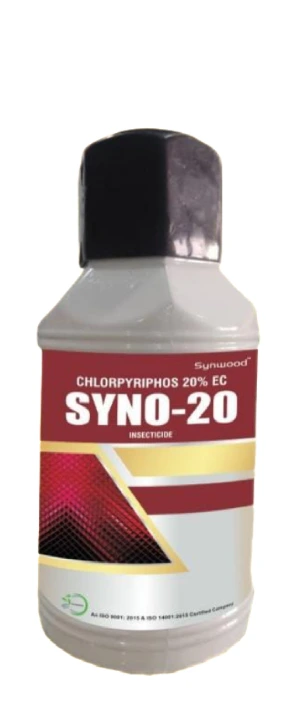
SYNO-20 by Synwood
- Chemical compound: Chlorpyrifos 20.0% EC
- Always refer to the product labels and accompanying leaflets for complete product details and safety measures.
- For Black & Green Grams

Tagban by Tropical
- Chemical compound: Chlorpyrifos 20.0% EC
- Always refer to the product labels and accompanying leaflets for complete product details and safety measures.
- For Black & Green Grams
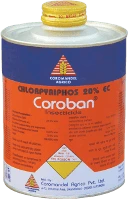
Coroban by Coromandel
- Chemical compound: Chlorpyrifos 20.0% EC
- Always refer to the product labels and accompanying leaflets for complete product details and safety measures.
- For Black & Green Grams
Best Organic Control Tips
Cutworms have many enemies including parasitic wasps, flies and predators such as grasshoppers. Bio-insecticides based on Bacillus thuringiensis, Nucleopolyhedrosis virus and Beauveria bassiana provide effective population control. Natural predators should be encouraged by avoiding unnecessary treatment.
Resistance Management in 2024
As with any pest management strategy, the potential for resistance to develop is a significant concern. Black cutworms can build resistance to insecticides if the same chemicals are used repeatedly. In 2024, resistance management is more important than ever.
- Rotating Insecticides: One of the best ways to prevent resistance is by rotating insecticides with different modes of action. This ensures that cutworms do not build up resistance to a particular chemical, prolonging the effectiveness of all available tools.
- Combining Chemical and Biological Control: Integrating chemical treatments with biological control methods can also help reduce resistance. By applying insecticides in combination with biological agents, such as parasitic wasps or beneficial nematodes, pest populations can be reduced in multiple ways, decreasing the overall reliance on chemical treatments.
- Monitoring and Adjusting Strategies: Regularly monitoring fields and gardens for black cutworm activity allows for early detection of resistance issues. If insecticides begin to lose their effectiveness, switching to a different chemical class or increasing the use of biological controls may be necessary.
- Plant early to avoid population peaks of the pest.
- Avoid planting corn in fields formerly sown with soybeans.
- Plow the field to bury larvae or expose them to predators 3 to 6 weeks before planting.
- Plant sunflower plants around the field to attract black cutworms.
- Clear weeds in and around the field before planting and after emergence.
- Use light and pheromones traps to monitor or catch moths.
- Cultivate frequently to injure and expose cutworms to predators.
- Bury plant residues deep in the soil after harvest.
- Keep the field in fallow for some weeks before planting.
How to Apply Insecticides Effectively
Even the best insecticides will not provide satisfactory control if they are not applied correctly. Here are some key tips for ensuring that insecticide applications are as effective as possible:
- Timing: Insecticides should be applied when larvae are most active, which is typically during the late afternoon or early evening. This ensures that the black cutworms are exposed to the treatment while feeding.
- Targeting the Base of Plants: Because black cutworms tend to stay near the soil surface, it is crucial to target insecticide applications at the base of plants, where larvae are most likely to come into contact with the chemical.
- Proper Equipment Calibration: Whether using a hand sprayer in a home garden or large-scale equipment in a commercial field, proper calibration is essential to ensure even coverage. Inadequate coverage can leave areas untreated, allowing black cutworms to survive and continue feeding.
Conclusion
Black cutworms continue to pose a serious threat to crops and gardens in 2024, but with the right strategies, their populations can be controlled. By understanding the black cutworm’s life cycle and integrating cultural, biological, and chemical controls, it is possible to protect crops from their destructive feeding. The insecticides highlighted in this article—such as pyrethroids, neonicotinoids, and biological options like Bt—offer a range of effective solutions. However, resistance management is essential to ensure that these tools remain effective in the years to come.
By staying informed and proactive, farmers and gardeners alike can protect their crops from black cutworms, safeguarding both food production and economic stability.
